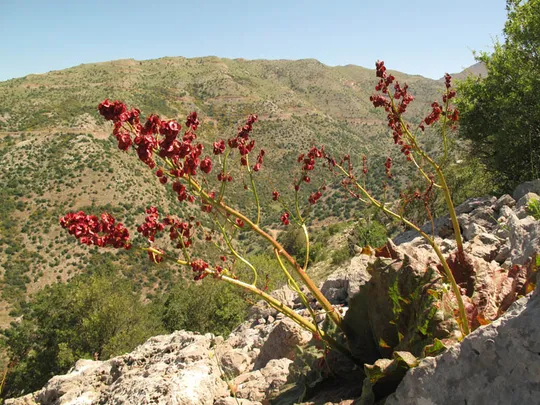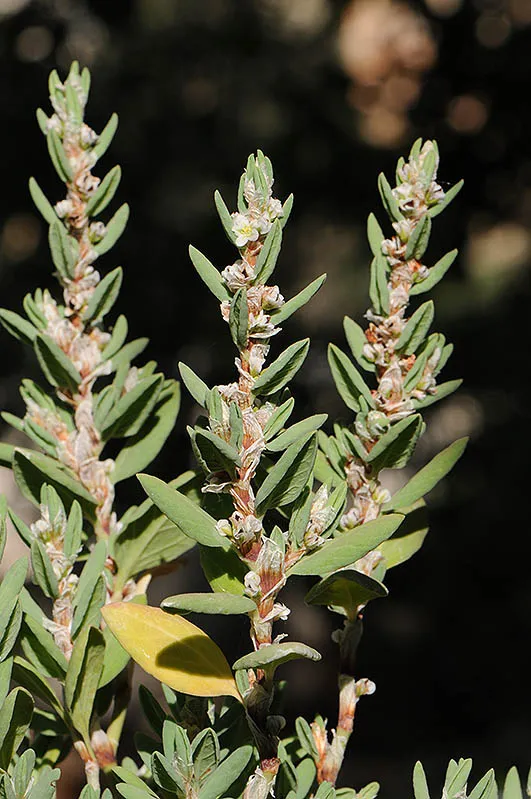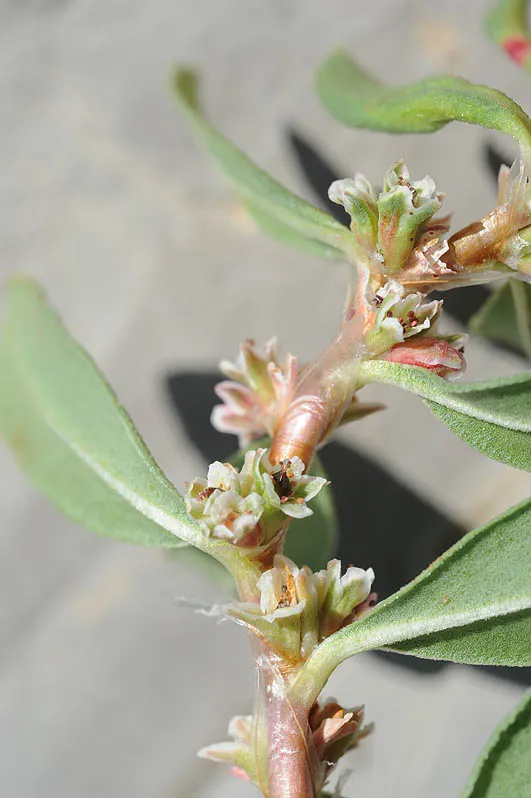Desert Rhubarb
Rheum palaestinum
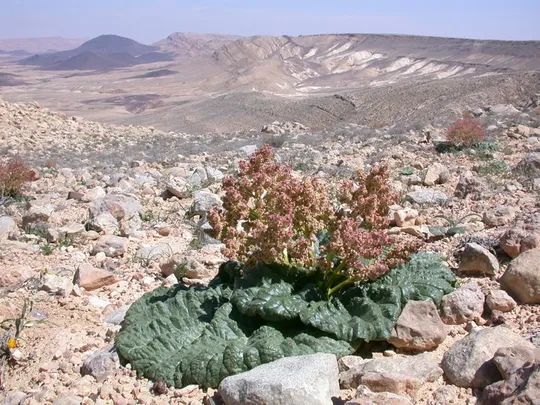
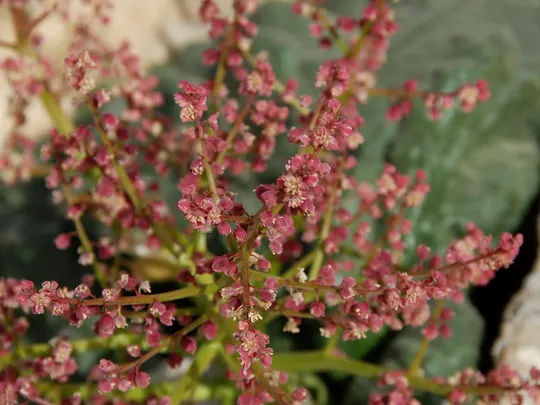
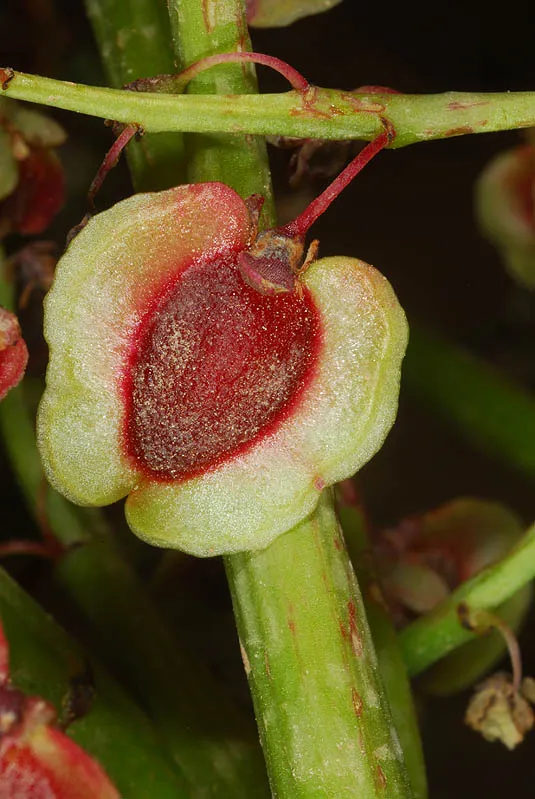
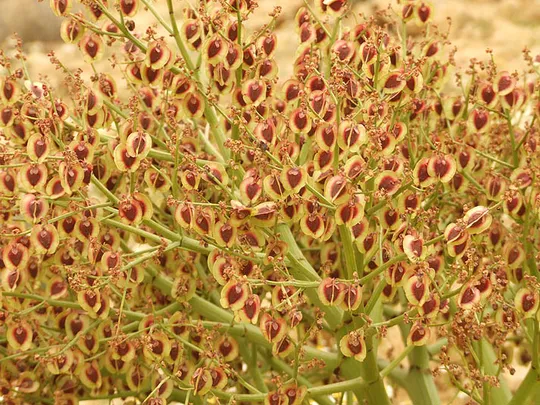
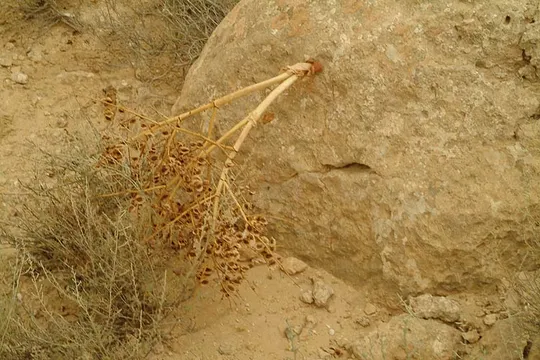
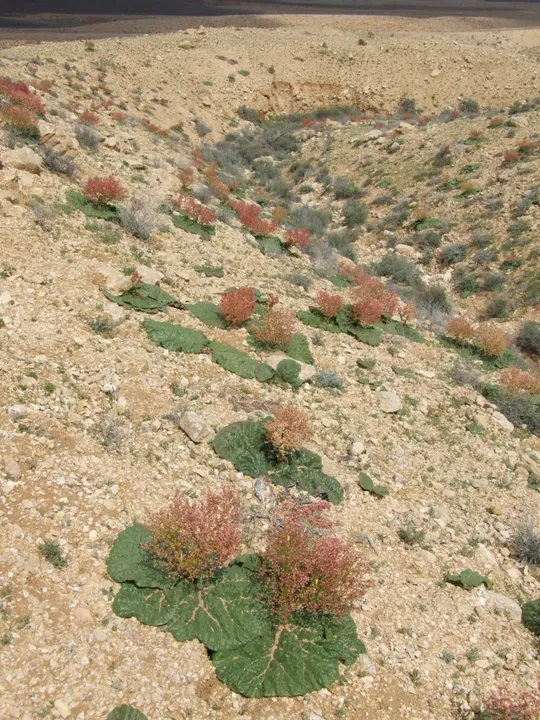
Rheum palaestinum
grows at 32 sites, mostly in the high Negev Highlands and a few in the southern
Negev. Many sites are scattered in the Mitspe Ramon area and westwards through along
the tributaries of Wadi Akrav and Wadi Nitsana to the Wadi Lots area. In this
area the plant has only disappeared from the HaRuhot Plain. On the western part
of the Ramon Crater: in the area of Ma’ale Arod, Wadi Lots and Wadi Elot there
are large concentrations of R. palaestinum. Isolated
populations were also found on Mount Sagi. The species is also found in Wadi Nekraot
and Wadi Ramon in the Ramon Crater in the southern Negev. These may be individual
plants that dispersed from Negev Highlands populations to the Makhtesh Ramon and
successfully germinated in certain years.
Rocky ground, rocks
and cliffs and desert rocks, usually above 850 meters, together with
Artemisia sieberi.
The genus Rheum
includes about 25 species most of which are found in the temperate regions of
Asia. The two most westerly species are R. palaestinum, which is also the most arid species in the genus, and R. ribes which also grows in Eastern
Europe. R. ribes is found at two
sites on the Israeli Hermon and is extremely rare. It is a taller plant that
grows on rocky slopes and cliffs in transition zone montane forests of Quercus
boissieri and other deciduous trees on Mt. Hermon. Like R. palaestinum, it too does not bloom every
year and in some years populations bearing only leaves are seen. R.
palaestinum could be
considered a vicarious species of R. ribes:
while R. ribes grows in the mountains of
the northern Fertile Crescent, R. palaestinum replaces it towards the southern
mountains. The difference between the two species is very small and can be determined
mainly by the number of central leaf veins: three in R. palaestinum and five in R. ribes.
·
The range of Rheum
palaestinum in the Negev Highlands region and in the southern Negev
is apparently stable and the number of sites that have disappeared is small.
·
The number of plants
in the R. palaestinum populations at the various sites ranges
from a few to tens and hundreds. Information on the annual variation in the
number of plants at each site is not lacking, nor is there information on the population
turnover and the rate of plant replacement through natural reproduction to
ensure the long-term survival of populations.
·
The
disappearance of the plant from the HaRuhot Plain was caused by the conversion of
land to agriculture and because of the disturbance caused by military activity.
However, the threat to most sites in the Negev Highlands is relatively low
because of poor accessibility. It is not clear if the recent increase in
drought years has affected R. palaestinum populations.
·
Most of the
sites are protected in the Negev Highlands Nature Reserve.
·
Information regarding
the threat and conservation status of R. palaestinum in Jordan and in Arabia is lacking.
Rheum palaestinum populations at
selected Negev Highlands and southern Negev sites should be subject to
long-term monitoring to study demographic trends in each population and to
ensure that the populations of Wadi Nekraot and Wadi Ramon are indeed viable.
Rheum palaestinum is a sub-endemic
plant with a fragmented distribution. It appears in populations (probably relictual)
only in the mountains in northern Saudi Arabia, in southern Jordan and the
Negev Highlands in Israel. Naomi Feinbrun described it from Edom.
Rheum palaestinum is a perennial
herbaceous plant with a unique appearance, which grows in the Negev Highlands
and in adjacent sites in the southern Negev. It is relatively rare and
attractive for picking particularly when its fruit matures. R. palaestinum is endemic to the Negev Highlands, to the southern Jordanian
mountains and to northern Saudi Arabia. Its disjunct geographic distribution suggests
relictualism.
Lev-Yadun, S., Katzir G. and Ne`eman, G. 2009 Rheum palaestinum - desert rhubarb, a self-irrigating desert plant. Naturwissenschaften 93: 393-397.
Current Occupancy Map
| 1000 squre meter pixel | 5000 squre meter pixel | 10000 squre meter pixel | |
|---|---|---|---|
| number of observations | 0 | 0 | 0 |
| in total pixels | 0 | 0 | 0 |
| Family | Polygonaceae |
| Classification | On the near threatened species list |
| Ecosystem | Desert |
| Chorotype | Western Irano - Turanian |
| Conservation Site | Arod Pass |
| Rarity |
1
1
6
|
|---|---|
| Vulnerability |
0
0
4
|
| Attractiveness |
0
3
4
|
| Endemism |
0
1
4
|
| Red number |
1
2.6
10
|
| Peripherality | 0 |
| IUCN category | DD EW EX LC CR EN VU NT |
| Threat Definition according to the red book | Near threatened |
 Based on:
Based on:
